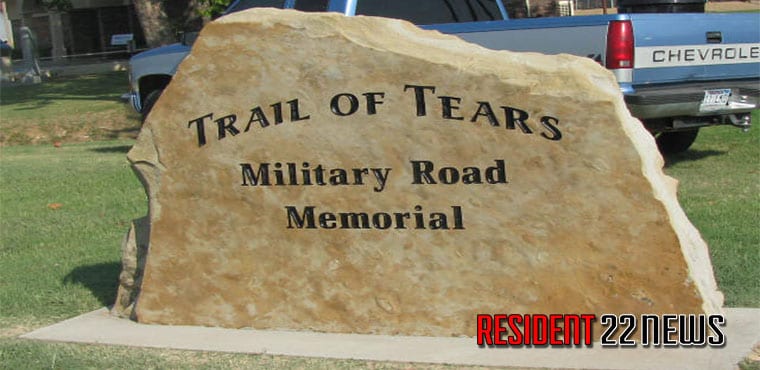By Jack James
In the 1820s, the Chief of the White Tribe was President Andrew Jackson. He didn’t like American Indians at all. So he began the policy of removing all Native Americans to western lands, especially the Indian Territory which is now Oklahoma. Families of Indians were forced from their homes by armed soldiers. Those homes were not all huts or teepees either. Some of these families had farms with farmhouses, two stories tall even. They were forced to travel to Oklahoma with just what they had on or a few belongings. This is where we fit in to the story.
One of the tribes was the Seminole. A group of Seminole were led by a man named Lt. Deas. Every group had a soldier leader but Lt. Deas kept great notes and journaled his expenses and excursions.
The Seminole Indians were removed from Florida. In 1838, Deas brought his group up the Arkansas River by boat and landed at Titsworth Landing in Roseville, Arkansas. The river was impassible at the time, due to drought conditions, so they journeyed by foot. On May 14, they followed the wagon roads southwest toward what is now Highway 288. They traveled four miles that day. That evening, the group was issued four days of corn rations and four wagons of additional corn and meat for the 370 Seminoles that remained from the start of their trip. They camped at today’s Sheep Farm Road.
On May 15 and 16, they traveled six miles because the roads were in very bad condition due to heavy rains for both of those days. The son of their Principal Chief Emathla, was very sick and was dying. Two others died on that day. They figured up to 130-150 of the people were very sick so they didn’t continue that day.

They didn’t move on May 17 either. The Principal man was sick and died. He and four men are buried near present day Line Road and O’Neal Road, just north and west of Caulksville. They are traveling now on the Military Road which was constructed earlier for travel to and from Fort Smith and Little Rock. They made ten miles on the eighteenth and camped west of the crossroads of Highway 60 and Military Road. They didn’t move on May 19 at the request of the Chiefs. The Principal Medicine man, Hotulgee Yohola, was dying. In a heavy rain, their medicine man was buried at this site.
On May 20, the Seminole tribe passed through what will be downtown Lavaca. Straight down the future Main Street and onward west to the Vache Grass Creek. Here, the teams got stuck in the mud until they harnessed ten oxen to each wagon to pull it out. Five teams remained in the rear after they had worked all night so they camped on the Lavaca side of the creek in another heavy rain. In an earlier trip by the Cherokee, two Cherokee children, one Cherokee and the other a black Cherokee slave, died at this spot and were buried on the creek bank there.
It should be noted that this route was taken because the Arkansas River was too low to travel from drought conditions, yet it rained heavily on these poor travelers almost daily from Roseville to the Oklahoma Territory!
A small memorial has been built in remembrance of the lives lost in dark time of our nation in the Lavaca City Park by City Hall.







